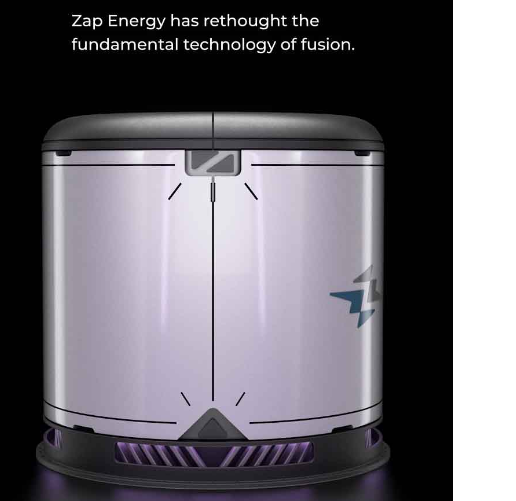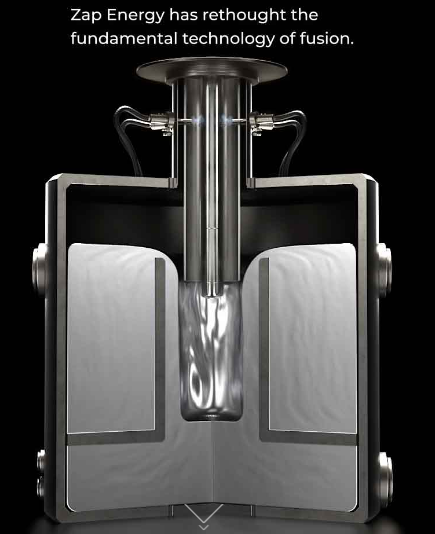Z-Pinch: the start-up that wants to carry out nuclear fusion in a unit the size of a garage …


Nuclear fusion is an incredibly complex scientific problem that researchers are tackling from all sorts of angles, but US-based Zap Energy is starting to make headlines thanks to one of the lesser-known approaches. The Seattle-based startup has reached a major milestone for its “Z-pinch” fusion technology and is now working to make it a commercial reality through modular, garage-sized reactors.
Nuclear fusion research aims to recreate the process that occurs inside the Sun, where intense heat and pressure combine to create a plasma in which atomic nuclei fuse to release energy. Much of the effort in this field focuses on suspending these plasma streams inside donut-shaped or twisted-ring reactors, using incredibly complex magnetic fields, and that will be the name of the game in ITER, the largest reactor. to nuclear fusion of the world which will come into operation within this decade.

Z-pinch presents a very different path, but one that may ultimately prove to be cheaper and more efficient. In fact, instead of intricate networks of expensive magnetic coils and expensive shielding materials to protect them, Z-pinch systems rely on an electromagnetic field generated within the plasma itself. This field locks the plasma inside a relatively short column and "pinches" it until it becomes hot and dense enough to allow nuclear fusion.
In 2019, we looked at the work of a group of scientists from the University of Washington who found a solution to the instability problems that have plagued Z-pinch technology since its inception in the 1950s. Using what is known in fluid dynamics as cut axial flow, the team demonstrated a way to smooth out plasma flows to avoid swelling and distortions that historically cause them to collapse.
Meanwhile, one of the authors of that study, Uri Shumlak, sought to leverage this axial cut flow technique to make Z-pinch fusion technology a reality, having co-founded Zap Energy in 2017. Last week, the company reached a milestone in its journey, creating the first plasma flows inside its prototype reactor, called FuZE-Q.
"Z-pinch has long been an attractive way to achieve nuclear fusion, but for many years researchers have viewed the instabilities of the Z-pinch plasma as an insurmountable challenge," says Shumlak, who serves as Chief Science Officer. by Zap Energy. We have demonstrated, through simulations and experiments, that shear flows can stabilize fusion plasmas and that stability should be extended to a commercially viable scale. " The Zap Energy team has made rapid progress since this technology came out of the lab, largely thanks to the recent growth of the team and investments. "
Previously, the team had demonstrated plasmas with an electrical current of 500 kiloamps (kA), the maximum that its previous reactor prototypes could handle. But the higher the current, the hotter and denser the plasma becomes, which is why the new generation FuZE-Q has been designed to handle currents of 650 kA. The team's scientific modeling indicates that this is the break-even point, where the energy exiting the device is greater than what is needed to make it work, defined as Q = 1.
“FuZE-Q is the fourth generation of Z-pinch devices we have built and is arguably the most ambitious,” said Brian A. Nelson, Chief Technology Officer of Zap Energy. "We have designed it to be versatile, resilient and tunable in many ways that will be critical as we move to higher currents, temperatures and densities."
The Zap Energy team has just closed a $ 160 million funding round, which will help bring its form of fusion power to market. With no need for expensive magnets or high-powered lasers, as is the case with other approaches, the company plans to achieve this with mass-produced ballasts that are small enough to fit in a garage. These modular devices could be used to power remote communities or combined and scaled to power entire cities. An incredible result, especially when compared with the traditional ITER approach which, for now, has cost billions and led to nothing.
The new, innovative approaches to fusion, such as that of Oxford, and this promise much simpler solutions than those followed so far, based on the conenumento forcing.

Thanks to our Telegram channel you can stay updated on the publication of new articles of Economic Scenarios.
The article Z-Pinch: the start-up that wants to carry out nuclear fusion in a unit the size of a garage… comes from ScenariEconomici.it .
This is a machine translation of a post published on Scenari Economici at the URL https://scenarieconomici.it/z-pinch-la-start-up-che-vuole-realizzare-la-fusione-nucleare-in-ununita-grande-come-un-garage/ on Sun, 03 Jul 2022 21:23:07 +0000.
